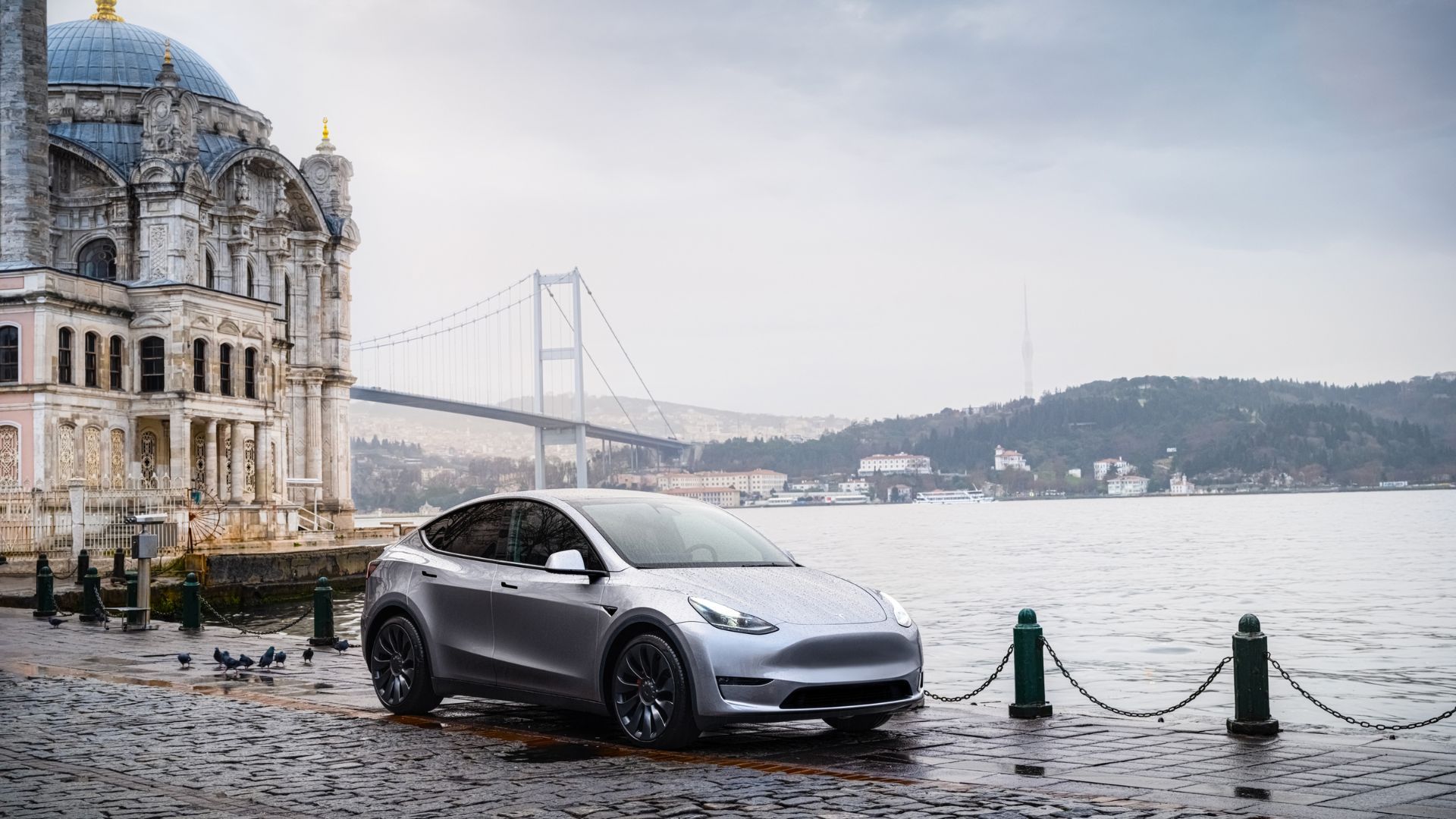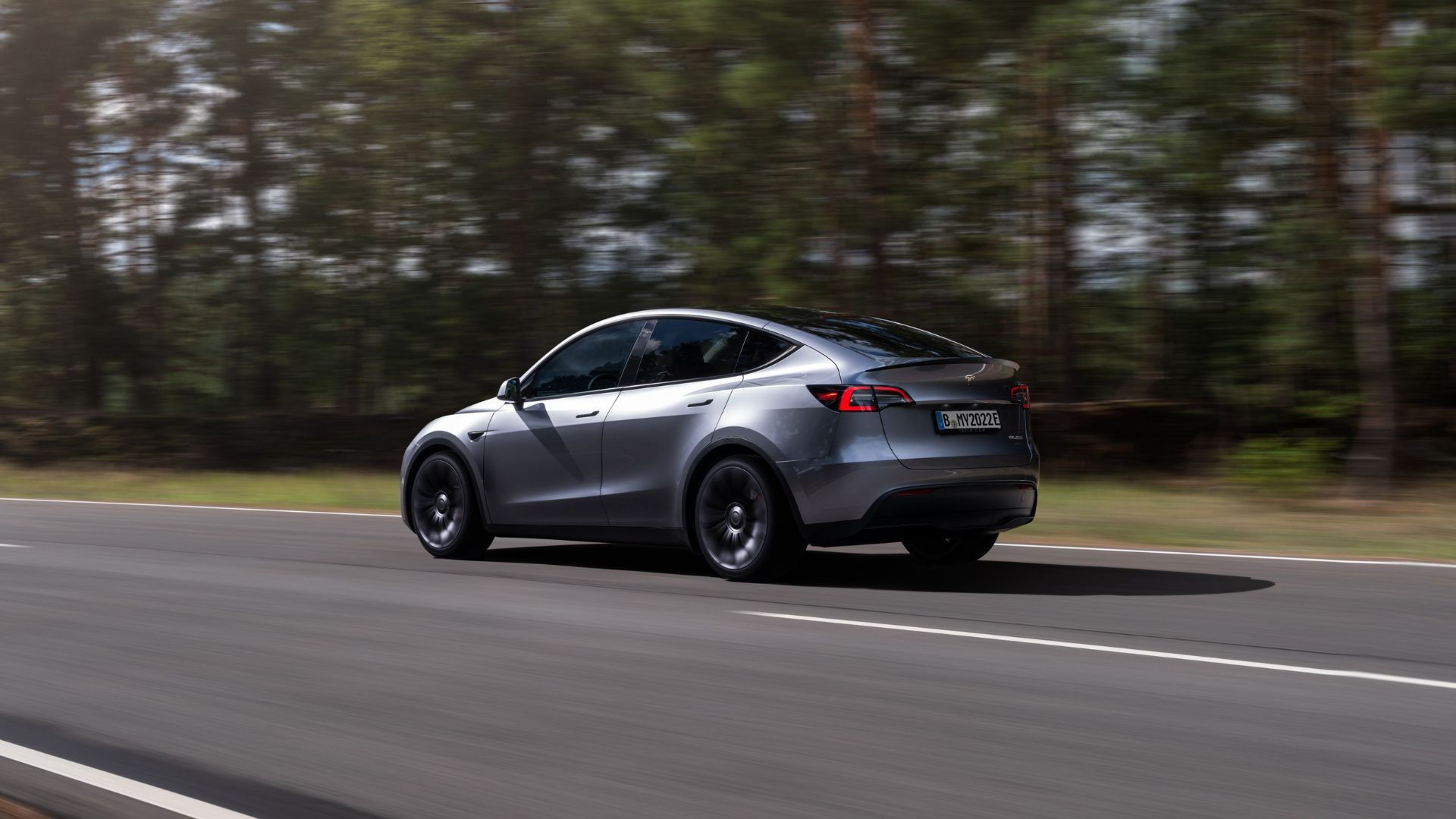The Tesla Model Y is the world’s best-selling EV, so there are certainly many people out there who are concerned about the cost of Model Y battery replacement. Whether you’re a Model Y owner or just curious about this aspect of EV ownership, we’re here to help.
A crossover with lots of positive features, it’s no surprise the Model Y is so popular. The crossover has lots of space, offers excellent performance and decent range, and it’s competitively priced, too. In the US, the Model Y is available in three trims: Long Range RWD, Long Range AWD, and Performance (AWD). Both powertrains—RWD and Dual Motor (AWD)—are equipped with a unique battery capacity, creating a balanced pricing strategy without compromising estimated range figures.
Not everyone buying a Tesla Model Y plans to own it long-term, but if you do, it’s worth knowing what it’ll cost you to replace the battery pack when it reaches the end of its lifespan. If EV ownership is unfamiliar territory, you’ll be pleased to know that understanding the costs associated with replacing the Model Y’s battery is relatively easy. But, as you can imagine, it does come at a substantial cost.
In order to give you the most up-to-date and accurate information possible, the data used to compile this article was sourced from the Tesla website and other authoritative sources, including the EPA and J.D. Power.
How Much A New Tesla Model Y Battery Costs
If you plan on owning a Tesla Model Y long term, it’s important you understand the costs associated with replacing the battery pack. If the battery were to fail outside your warranty, you can expect to fork out anywhere between $12,000 and $20,000 to have it replaced. The costs really depends on the battery’s capacity and how severe the degradation is, as Tesla doesn’t replace the entire battery pack—instead it replaces select faulty modules.
Of course, you can have the battery pack repaired or replaced at an independent workshop for cheaper, but it’s highly recommended that you stick with the manufacturer for not only the best results, but for the brand’s stamp of approval in your service book.
How The Tesla Model Y Battery Is Replaced
To be fair, it’s money well spent, as Tesla’s technicians follow a precise process to replace battery modules when the battery pack reaches the end of its lifespan or experiences a failure. This starts with them performing a diagnostic test to confirm the issue, checking the battery management system, and running appropriate tests to identify the damaged or degraded modules.
Unless a full battery pack replacement is required, only the affected modules are replaced, in order to preserve the rest of the pack.To do this, the technicians must disconnect the vehicle from its power sources and ensure safety protocols are followed, as working with high-voltage systems requires caution. As the battery pack is located underneath the car, the vehicle must be lifted to access it.
To remove the entire pack from the chassis, technicians use specialized tools. The battery pack contains several modules, each made up of individual cells. Damaged cells are replaced with new ones and, after installation, the pack is then resealed and reinstalled in the vehicle.
The entire system is then tested to ensure proper functioning, including checking the battery’s thermal management, charging capabilities, and overall performance. Technicians then update the car’s software to recalibrate the battery management system to recognize the new modules.
Tesla’s replacement process ensures the Model Y’s performance and range remain optimal without the need for full battery pack replacement, reducing both costs and environmental impact. Speaking of the latter—Tesla prioritizes sustainability, so the old modules are either recycled or repurposed for energy storage systems.

Related
Tesla Explains How Its Cars Calculate Remaining Range
Here’s why your Tesla’s range may seem unusually low on some days.
Understanding The Tesla Model Y’s Different Battery Options
The Tesla Model Y was previously available with a 57.5-kWh Prismatic LFP battery in the base rear-wheel drive (Standard) model. However, the model was replaced with a rear-wheel drive option (Long Range) with an extended battery pack. In Long Range trim, the vehicle features a more powerful dual-motor all-wheel drive system and a larger, 2170 79-kWh battery. The Performance trim—sitting at the top of the range—features the same battery pack but a more powerful set of dual motors.
The American EV producer sources all of its batteries from Panasonic, and has done so for more than a decade. The Japanese energy company works with Tesla to further push the boundaries of battery technology, including exploring sold-state chemistries. Further, Panasonic is also developing a production facility close to Tesla’s Texas plant, so that it can improve the manufacturer’s supply chain, leading to faster and more efficient distribution times.
|
Long Range RWD |
Long Range AWD |
Performance |
|
|
Price |
$31,490 |
$34,490 |
$37,990 |
|
Powertrain |
Single Permanent-Magnet Motor |
Dual Permanent-Magnet Motors |
Dual Permanent-Magnet Motors |
|
Transmission |
Single-Speed Automatic |
Single-Speed Automatic |
Single-Speed Automatic |
|
Horsepower |
295 HP |
384 HP |
456 HP |
|
Torque |
310 LB-FT |
376 LB-FT |
497 LB-FT |
|
Driveline |
Rear-Wheel Drive |
All-Wheel Drive |
All-Wheel Drive |
|
Battery |
82 kWh Net |
82 kWh Net |
82 kWh Net |
|
Range |
320 Miles |
310 Miles |
279 Miles |
|
Fast Charging Time |
25 Minutes |
27 Minutes |
27 Minutes |
|
Energy Consumption |
28 kWh/100 Miles |
28 kWh/100 Miles |
28 kWh/100 Miles |
|
0-60 MPH |
6.5 seconds |
4.8 seconds |
3.5 seconds |
|
Top Speed |
135 MPH |
135 MPH |
155 MPH |

Related
Which Tesla Models Have the Longest Range?
Looking for an EV with a ton of range? These are the Tesla models to consider.
How Long A Tesla Model Y Battery Lasts
Generally speaking, EV batteries have a lifespan of between eight and 10 years. Tesla CEO, Elon Musk, claims that the brand’s batteries can last up to 500,000 miles. However, current Model S and Model X users say 200,000 is a more realistic figure.
The Model Y uses lithium-iron-phosphate and lithium-ion batteries, which are supposedly designed to last between 300,000 and 500,000 miles with regular use, depending on driving habits and environmental conditions. 150,000 to 200,000 miles is a more realistic figure, though.
Tesla’s battery warranty is comprehensive, with the brand covering all defects within the first eight years or 120,000 miles, and even replacing the battery if it loses 70 percent of its charge within this time.
To help extend the battery’s lifespan, proper maintenance, such as avoiding extreme charging habits or prolonged exposure to high temperatures, should be observed. Although battery degradation occurs gradually, Tesla’s battery management system optimizes charging and discharging to preserve battery health.
Tesla’s Comprehensive Battery Warranty
All new Model Y sales include Tesla’s new vehicle limited warranty package. That means you get a four-year or 50,000-mile basic warranty, a 12-year and unlimited-mile corrosion warranty, a five-year or 60,000-mile restrain system warranty, and an eight-year or 120,000-mile for all-electric drive systems. Further, Tesla guarantees its battery will retain 70 percent of its charge during this period.
|
Type |
Duration |
|
Full Warranty |
Four Years/50,000 Miles |
|
Powertrain Warranty |
Eight Years/120,000 Miles |
|
Maintenance Warranty |
0 Months/0 Miles |
|
Roadside Warranty |
Four Years/50,000 Miles |
|
Corrosion Warranty |
12 Years/150,000 Miles |
|
Federal Emissions Performance |
Two Years/24,000 Miles |
|
Federal Emissions Defect |
36 Months/36,000 Miles |
|
Seat Belt and Airbags |
Five Years/60,000 Miles |
Defects in materials and workmanship relating to the battery and drive unit are covered under warranty. Tesla guarantees that during the period, the battery will maintain at least 70 percent of its original capacity. Should the battery degrade below this level or fail due to a manufacturing defect, Tesla will either repair or replace the battery pack at no charge.
Also included in the warranty are labor costs for any necessary repairs. However, it doesn’t include damage caused by misuse, accidents, intentional abuse, or non-Tesla modifications. Further, if the owner fails to follow Tesla’s recommended charging guidelines or if the battery is damaged due to environmental factors such as flooding, those issues fall outside the scope of warranty coverage.















